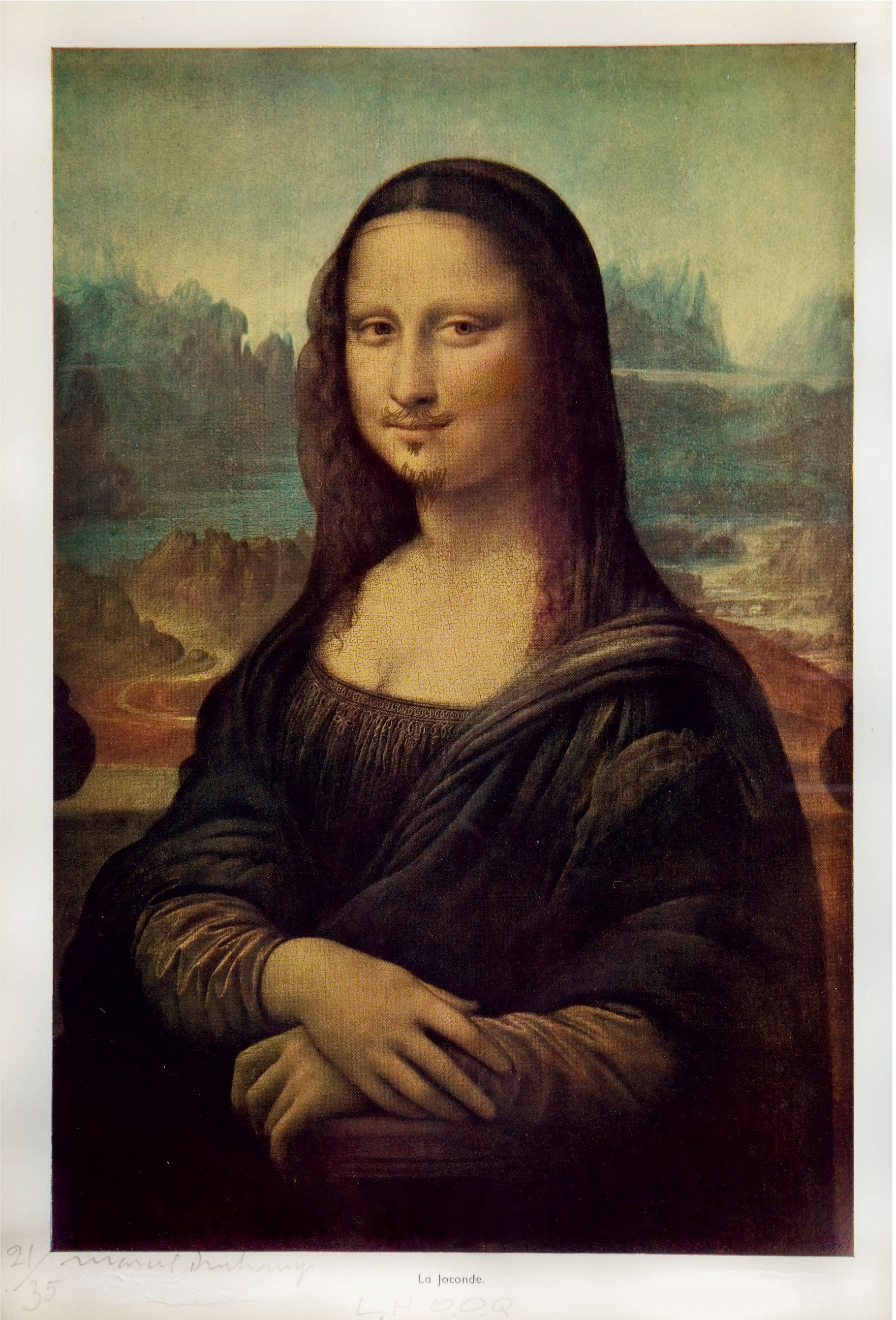Stolen Pieces
In today’s world, the ideas of ownership, authorship, and appropriation are more controversial than ever before with the invention of both copyright law and patent protection as well as a surplus of popular photo, video, and sound editing softwares. This modern unfolding of events perfectly explains the commotion, controversy, and popularity of Eva and Franco Mattes’s artwork Stolen Pieces. As a pinnacle of their exhibition Reality is Overrated at the Postmasters Gallery in New York this piece explores the lives of artworks themselves and how their physical surroundings can change their meaning and significance.
Upon entering a long and narrow, all-white gallery room with several framed images, visitors approach a simple white table built into the left wall at a slight angle with a clear glass cover. Inside this glass case are about 50 artifacts that were stolen from famous works of art by Eva and Franco between 1995 and ’97. There are also large photos of every artifact scattered throughout the exhibit. These artifacts range from stickers taken off of aquariums to bottle caps and shoelaces stolen from sculptures. The pieces are scattered throughout this display table in an almost random, unorganized nature. Each artifact is positioned at a different angle in a random location with some stacked on top of others and no clear sense of organization or arrangement. All of the stolen pieces are also contained within their own smaller glass containers, made up of two thick slabs of glass on either side held together by 4 screws in each corner. These individual glass containers either give the artifacts a sense of confinement and imprisonment or portray them almost as scientific artifacts being observed in a petri dish sort of setting.
Perhaps this display was selectively chosen to portray the life’s these artworks once had before they were stolen, or perhaps Eva and Franco are quite literally trying to observe, dissect or understand the artwork.
“Duchamp said, ‘the spectator makes the art,’ we thought, ‘well, then he can also change it.’ We thought that stealing a piece of a work would bring it back to life again, back to its original destabilizing power. We wanted to let it escape from the museum, which, to us, looked like nothing but a jail.”
-Franco Mattes in “Eva and Franco Mattes’s Stolen Art” by Rachel Wolff
This choice of display could add a sort of irony to this exhibit portraying artifacts that have been “freed” or “liberated” in such a controlled, confined, and quarantined box. Eva and Franco are also combining many objects that are objectively unrelated to create a new, collective meaning. A stolen bottle cap by itself has limited significance beyond the original artist, but when combined with roughly 50 other stolen artifacts and presented years later in a gallery setting, a more cohesive and powerful concept of giving new life, and rebelling against the status quo is established. Eva and Franco Mattes’s piece Stolen Art questions the ideas of the authorship, ownership, and presentation of fine art in a very controversial and questionable way.
Conceptually Stolen Pieces embodies the idea of appropriation, which is the use or combination of pre-existing pieces of art with little to no individual contribution or modification. The Mattes’s simply stole artifacts, put them in glass containers, and re-displayed them in a new light. But even such simple tactics and methods can produce a powerful and controversial message. There are many other famous artworks exploring the idea of appropriation such as Marcel Duchamp’s L.H.O.O.Q. in which the artist simply drew a mustache on the priceless and timeless portrait of Mona Lisa. Duchamp believes that he is completing the artwork transforming Mona Lisa from a woman disguised as a man into an actual man. Leonardo Da Vinci used gender very intentionally in his works and explored the male and female forms in great depth. L.H.O.O.Q. is similar to stolen Pieces in the sense that they both explore appropriation or the transformation of another’s art. These individuals took beloved masterpieces and without legal or personal permission decided to modify them and re-present them as their own pieces of art.
Another famous appropriation piece is Andy Warhol’s Marilyn series in which he transformed black and white portrait photos of Marilyn Monroe into colored canvases and screen-prints using stencils and paint. Even though the original images he was using weren’t legally his, the final products were modified and manipulated enough to qualify them as original works of art. Stolen Pieces and Marilyn both use original artworks created in the past by individuals other than themselves, but by manipulating and combining others work they create a new story and give old, unappreciated art new life.
Stolen Pieces was on display at the Postmasters Gallery, NYC from May-June 2010.
Links:
https://www.thedailybeast.com/eva-and-franco-mattess-stolen-art?ref=scroll
http://www.washingtonpost.com/wp-dyn/content/article/2010/05/16/AR2010051603391.html
https://0100101110101101.org/stolen-pieces/
http://revolverwarholgallery.com/andy-warhol-art-appropriation/
https://www.theguardian.com/culture/2001/may/26/art
https://www.moma.org/learn/moma_learning/themes/pop-art/appropriation









